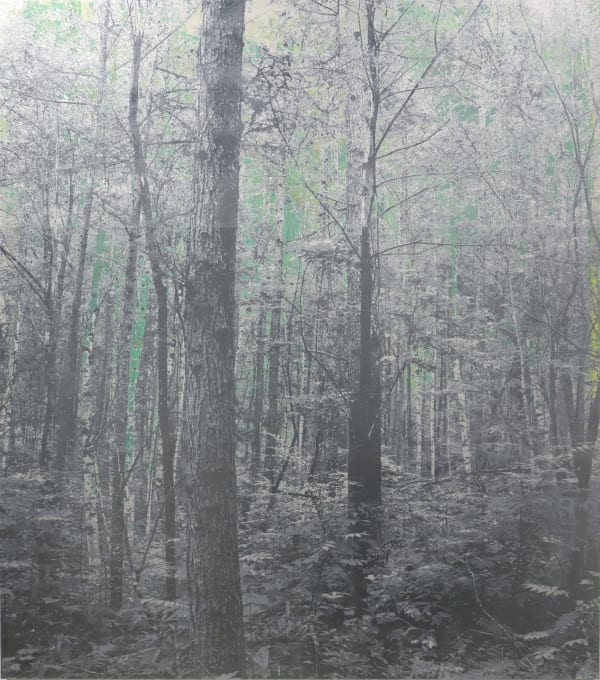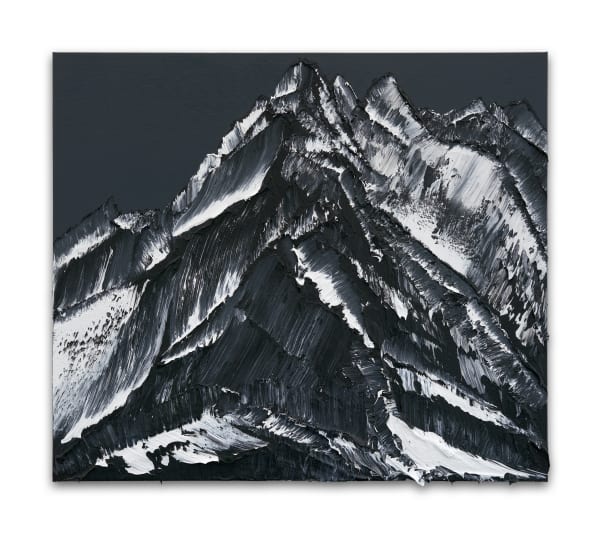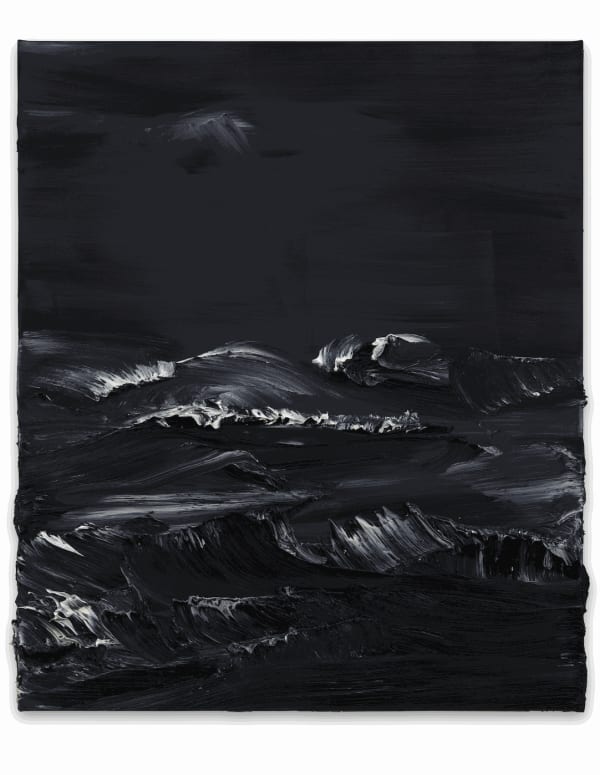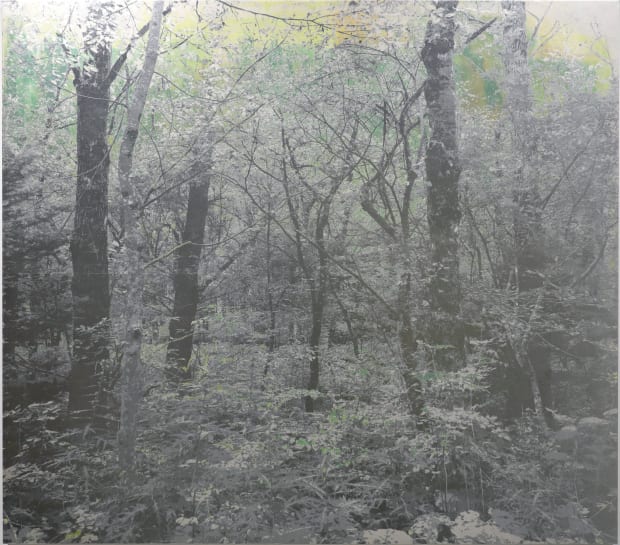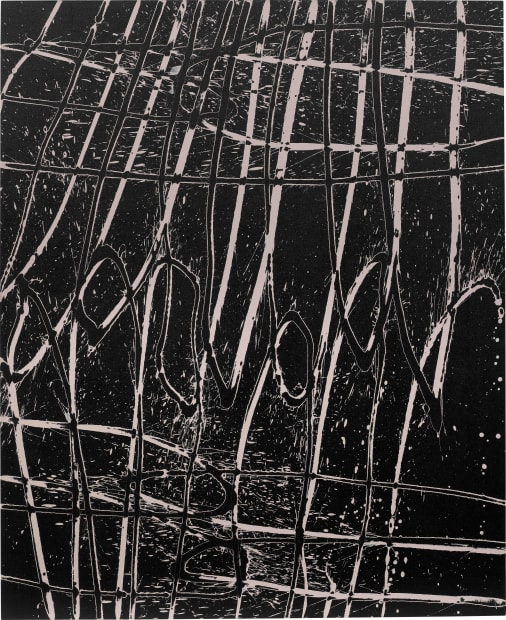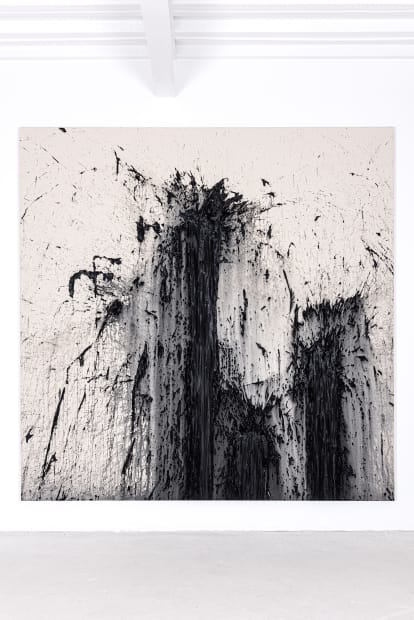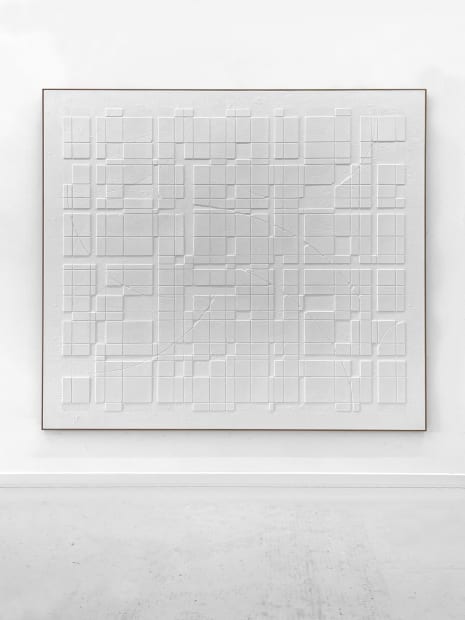-
-
JD Malat Gallery is pleased to present Matters of Materiality, a group exhibition that examines materiality as both substance and concept in contemporary abstraction. Texture has long been a means through which artists challenge perception, evoke memory and construct depth. In this exhibition, the surface is not a passive foundation but an active force; shaped, disrupted and redefined through process.
-
-

Richard Hudson
Crab, 2020
Polished Mirrored Steel
19 3/4 x 28 3/8 x 19 1/4 in
50 x 72 x 49 cm -

Richard Hudson
Unravel, 2020
Polished Mirrored Steel
26 3/8 x 98 3/8 x 52 3/8 in
67 x 250 x 133 cm -

Richard Hudson
Twisted, 2020
Polished Mirrored Steel
43 1/4 x 19 3/4 x 18 1/8 in
110 x 50 x 46 cm -

Andy Moses
Geomorphology 1705”, 2018
Acrylic on Polycarbonate, mounted on vertically concave, parabolic wood panel
151 x 208 x 15 cm
59.5 x 82 x 5.75 inches -

Masayoshi Nojo
Mirage #100, 2024
Cotton on panel, acrylic, silver foil, aluminium foil
66 7/8 x 59 in
170 x 150 cm -

Masayoshi Nojo
Mirage #97, 2024
Cotton on panel, acrylic, silver foil, aluminium foil
59 x 66 7/8 in
150 x 170 cm -

Ed Moses
Yenoh, 2004
Acrylic on canvas
72 x 60 in
182.9 x 152.4 cm -

Ed Moses
Pah, 2004
Acrylic on canvas
65 3/4 x 54 1/8 in
167.1 x 137.4 cm -

Ed Moses
W/Black, 2012
Mixed media on canvas
72 x 60 in
182.9 x 152.4 cm
-
-
The physical and conceptual possibilities of surface
Throughout the history of abstraction, artists have pushed beyond the visual, treating material as a language in itself. From the weight of impasto to the raw tactility of industrial substances, texture has been a site of tension: accumulating, resisting and shifting over time. Across varied approaches, the works in Matters of Materiality extends this dialogue with exhibiting work that stand in contrast to sharply defined grids. -
-

Santiago Parra
Untitled, 2022
Mixed media on canvas
64 5/8 x 50 3/4 in
164 x 129 cm -

Santiago Parra
Untitled, 2022
Mixed media on canvas
64 5/8 x 50 3/4 in
164 x 129 cm -

Santiago Parra
Untitled, 2023
Acrylic on canvas
77 1/2 x 77 1/2 in
197 x 197 cm
Framed:
79 1/8 x 79 1/8 in
201 x 201 cm -

Katrin Fridriks
Queen of Stargates - Magical Powers, 2024
Acrylic on canvas
150 x 100 in
381 x 254 cm -

Conrad Jon Godly
RENAISSANCE#38, 2024
Acrylic on canvas
51 1/8 x 59 in
130 x 150 cm -

Conrad Jon Godly
Dark is Light 2, 2017
Oil on canvas
37 3/8 x 31 1/2 in
95 x 80 cm -

Casper Brindle
Light Glyph 5, 2021
Plexiglas, pigmented acrylics
44 x 74 in
188 x 112 x 20.5 cm -

Casper Brindle
Light Glyph 6, 2021
Plexiglas, pigmented acrylics
74 x 44 in
188 x 112 x 20.5 cm -

Anne-Sophie Øgaard
White Conjunction 0356, 2025
Sand, cement, plaster, paint on canvas
63 x 70 7/8 in
160 x 180 cm
-
-
Material beyond its physicality
Matters of Materiality invites us to consider material beyond its physicality. Rather than serving as a passive surface, material is worked, manipulated and transformed, holding traces of process, gesture and intent. The exhibition considers how texture shapes experience, how material defines space, and how a work’s weight and presence shift perception. -
 Richard Hudson, Unravel, 2020, Polished Mirrored Steel, 67 x 250 x 133 cm
Richard Hudson, Unravel, 2020, Polished Mirrored Steel, 67 x 250 x 133 cm -
 Andy Moses, Geomorphology 1705”, 2018, Acrylic on Polycarbonate, mounted on vertically concave, parabolic wood panel, 151 x 208 x 15 cm, 59.5 x 82 x 5.75 inches
Andy Moses, Geomorphology 1705”, 2018, Acrylic on Polycarbonate, mounted on vertically concave, parabolic wood panel, 151 x 208 x 15 cm, 59.5 x 82 x 5.75 inches -
 Masayoshi Nojo, Mirage #97, 2024, Cotton on panel, acrylic, silver foil, aluminium foil, 59 x 66 7/8 in, 150 x 170 cm
Masayoshi Nojo, Mirage #97, 2024, Cotton on panel, acrylic, silver foil, aluminium foil, 59 x 66 7/8 in, 150 x 170 cm
-
 Ed Moses, Pah, 2004, Acrylic on canvas, 65 3/4 x 54 1/8 in, 167.1 x 137.4 cm
Ed Moses, Pah, 2004, Acrylic on canvas, 65 3/4 x 54 1/8 in, 167.1 x 137.4 cm
-
 Santiago Parra, Untitled, 2023, Acrylic on canvas, 77 1/2 x 77 1/2 in, 197 x 197 cm, Framed: 79 1/8 x 79 1/8 in, 201 x 201 cm
Santiago Parra, Untitled, 2023, Acrylic on canvas, 77 1/2 x 77 1/2 in, 197 x 197 cm, Framed: 79 1/8 x 79 1/8 in, 201 x 201 cm
-
 Conrad Jon Godly, RENAISSANCE#38, 2024, Acrylic on canvas, 51 1/8 x 59 in, 130 x 150 cm
Conrad Jon Godly, RENAISSANCE#38, 2024, Acrylic on canvas, 51 1/8 x 59 in, 130 x 150 cm
-
 Katrin Fridriks, Queen of Stargates - Magical Powers, 2024, Acrylic on canvas, 150 x 100 in, 381 x 254 cm
Katrin Fridriks, Queen of Stargates - Magical Powers, 2024, Acrylic on canvas, 150 x 100 in, 381 x 254 cm -
 Casper Brindle, Light Glyph 6, 2021, Plexiglas, pigmented acrylics, 74 x 44 in, 188 x 112 x 20,5 cm
Casper Brindle, Light Glyph 6, 2021, Plexiglas, pigmented acrylics, 74 x 44 in, 188 x 112 x 20,5 cm -
Anne-Sophie Øgaard
 Anne-Sophie Øgaard, White Conjunction 0356, 2025, Sand, cement, plaster, paint on canvas, 63 x 70 7/8 in,160 x 180 cm
Anne-Sophie Øgaard, White Conjunction 0356, 2025, Sand, cement, plaster, paint on canvas, 63 x 70 7/8 in,160 x 180 cm
Matters of Materiality
Current viewing_room




